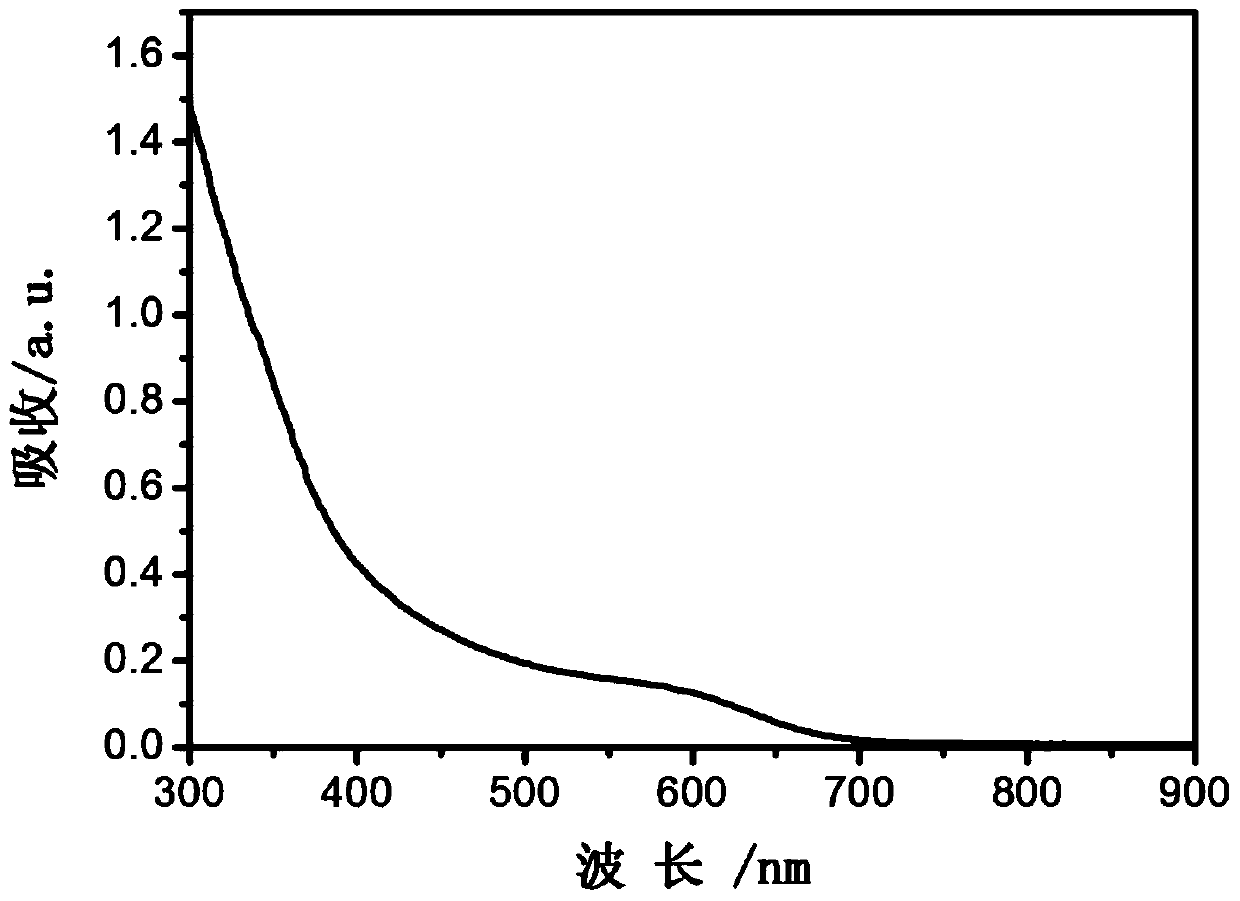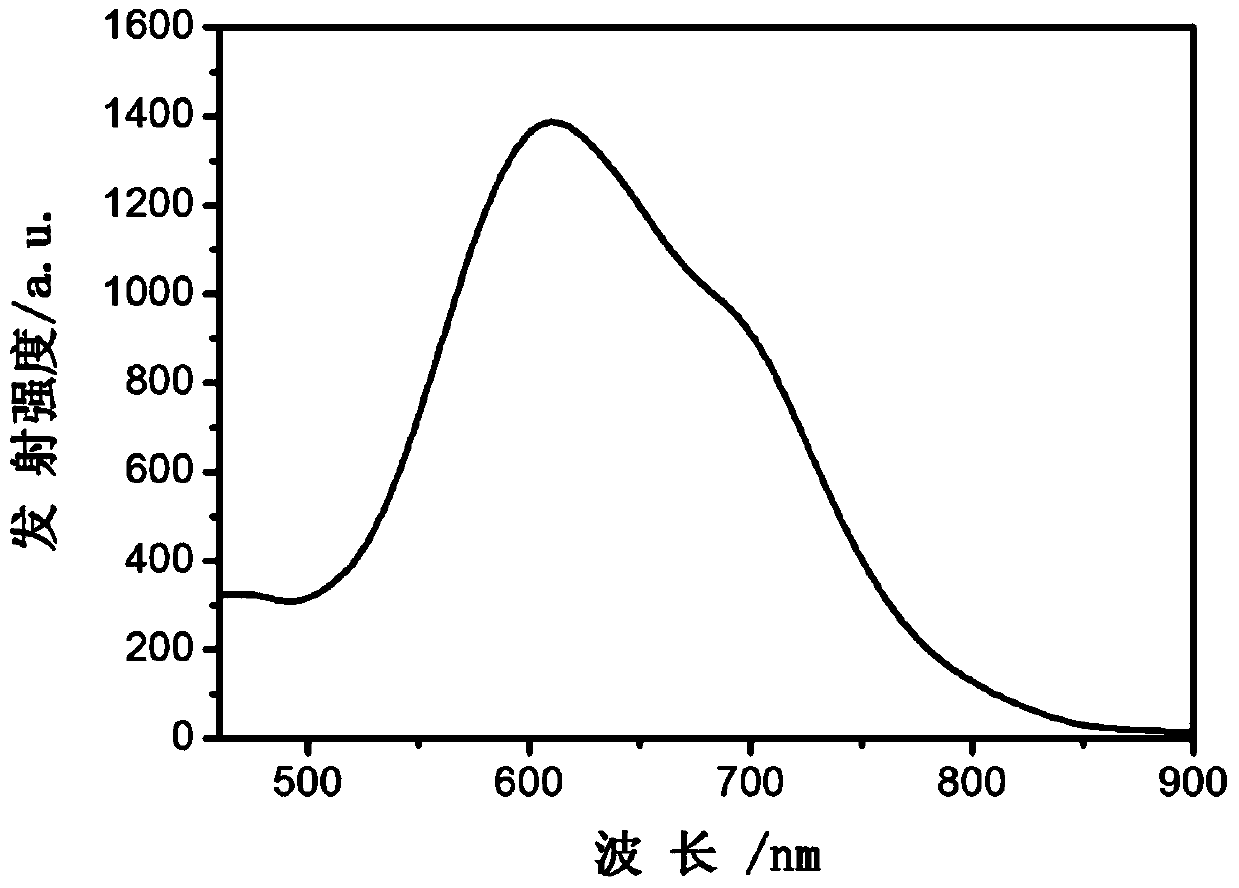Two-dimensional Zn-Cu-In-S nanosheet and preparation method thereof
A technology of zn-cu-in-s and nanosheets, which is applied in nanotechnology, nano-optics, nanotechnology, etc., can solve the problems of application limitations, easy surface contamination, etc., and achieve the effect of excellent luminous performance and stable structure
- Summary
- Abstract
- Description
- Claims
- Application Information
AI Technical Summary
Problems solved by technology
Method used
Image
Examples
Embodiment 1
[0048] Put 0.06mmol of indium trichloride tetrahydrate, 3ml of oleylamine and 3ml of octadecene into a three-necked flask, put the high-temperature rotor into the three-necked flask, vacuumize at room temperature for 10min, and start stirring and heating, keeping the heating rate at 5°C / min. When the temperature reaches 100°C, stop heating and turn off the vacuum pump, add nitrogen gas into the three-necked flask, stop heating and cool down to room temperature after the indium source is completely dissolved. At the same time, 0.15 mmol of sulfur source and 3 ml of octadecene were placed in a test tube, and the solution was heated under nitrogen protection. After completely dissolving, it was mixed with the indium source solution, and the mixed solution was heated at a heating rate of 5°C / min. When the temperature of the solution reaches 120° C., the copper precursor solution is added to the mixed solution, and the temperature is lowered after 3 minutes of reaction, and the co...
Embodiment 2
[0051] Put 0.04 mmol of indium trichloride tetrahydrate, 3 ml of oleylamine and 3 ml of octadecene into a three-necked flask, put the high-temperature rotor into the three-necked flask, vacuumize at room temperature for 10 minutes, and start stirring and heating, keeping the heating rate at 5°C / min. When the temperature reaches 100°C, stop heating and turn off the vacuum pump, add nitrogen gas into the three-necked flask, stop heating and cool down to room temperature after the indium source is completely dissolved. At the same time, 0.15 mmol of sulfur source and 3 ml of octadecene were placed in a test tube, and the solution was heated under nitrogen protection. After completely dissolving, it was mixed with the indium source solution, and the mixed solution was heated at a heating rate of 5°C / min. When the temperature of the solution reaches 120° C., the copper precursor solution is added to the mixed solution, and the temperature is lowered after 3 minutes of reaction, an...
Embodiment 3
[0054] Put 0.02mmol of indium trichloride tetrahydrate, 3ml of oleylamine and 3ml of octadecene into a three-necked flask, put the high-temperature rotor into the three-necked flask, vacuumize at room temperature for 10min, and start stirring and heating, keeping the heating rate at 5°C / min. When the temperature reaches 100°C, stop heating and turn off the vacuum pump, add nitrogen gas into the three-necked flask, stop heating and cool down to room temperature after the indium source is completely dissolved. At the same time, 0.15 mmol of sulfur source and 3 ml of octadecene were placed in a test tube, and the solution was heated under nitrogen protection. After completely dissolving, it was mixed with the indium source solution, and the mixed solution was heated at a heating rate of 5°C / min. When the temperature of the solution reaches 120° C., the copper precursor solution is added to the mixed solution, and the temperature is lowered after 3 minutes of reaction, and the co...
PUM
 Login to View More
Login to View More Abstract
Description
Claims
Application Information
 Login to View More
Login to View More - R&D
- Intellectual Property
- Life Sciences
- Materials
- Tech Scout
- Unparalleled Data Quality
- Higher Quality Content
- 60% Fewer Hallucinations
Browse by: Latest US Patents, China's latest patents, Technical Efficacy Thesaurus, Application Domain, Technology Topic, Popular Technical Reports.
© 2025 PatSnap. All rights reserved.Legal|Privacy policy|Modern Slavery Act Transparency Statement|Sitemap|About US| Contact US: help@patsnap.com



